All about pergolas
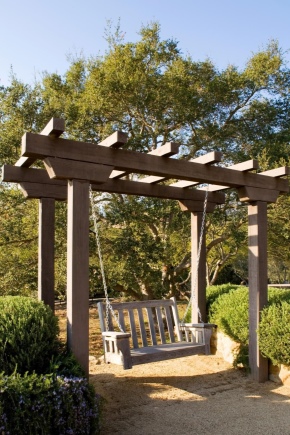
The word "pergola" has Italian roots, and associations with it are also consonant with the ideas of Mediterranean beauty - something graceful, beautiful, blown by the winds and warmed by the sun. In fact, it is so. A pergola is called a type-setting structure of garden arches connected to each other by crossbeams. The pergola has been known since the times of Ancient Rome, but the building has not lost its relevance until now.
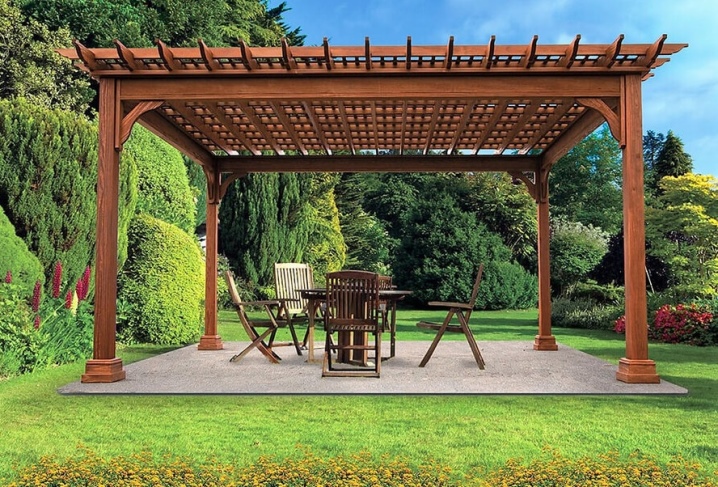
What is it and why is it needed?
Initially, the pergola served as a structure to support the vines: the structure became a convenient fixture for the proper growth of grapes and an increase in their yield. Nowadays, a decorative building performs several functions at once. In simple terms, the pergola decorates the area and creates a beautiful green hedge on the site.
Most often it is a free-standing structure, but there are also pergolas attached to the wall.
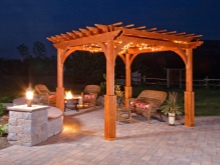

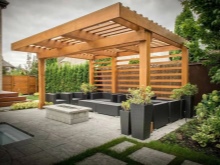
Why else are they building a pergola on the site:
- can cover a garage or other structure, which, as planned by the owners of the site, should not be conspicuous;
- helps to grow other plants on a trellis-like structure - from climbing flowers to blackberries and peas;
- replaces the gazebo - inside the pergola you can put a bench or a swing, place a summer dining area;
- helps to design a recreation area in a non-trivial way, protecting vacationers from annoying sun rays;
- serves as a canopy attached to the house;
- is a decoration in the garden - for example, a pergola in the form of an arch looks very elegant, romantic, decorates the space and structures it;
- can be combined with a terrace (2 in 1);
- performed simultaneously and in the form of a play corner for children (inside the pergola, you can place a sandbox, for example).
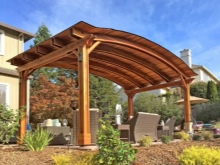
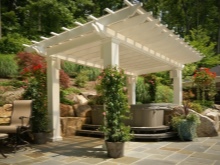
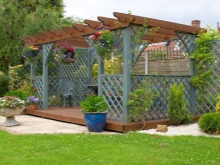
That is, the pergola still remains an ideal trellis structure for the proper cultivation of grapes with a uniformly ripening harvest, but it can be played out on the site in completely different ways.
Today, the word "photo zone" is actively used not only by young people, and many want to have such an ideal corner in their own garden. So, the pergola is a beautiful green living wall - will be an excellent option for creating a photo zone... And that's another building function. The last reason for the construction of the pergola will be that the structure is quite light: most of it will be climbing plants.
That is, even beginners in summer cottage construction can cope with the construction of such a structure.
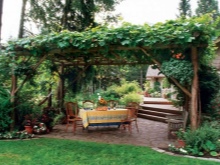

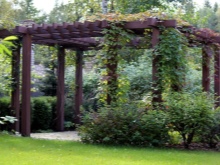
Species overview
There are several points by which the classification of pergolas in the country is carried out. The main division is in three categories.

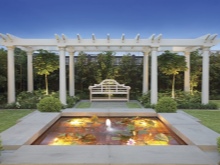
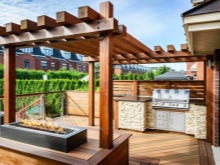
By design
Pergolas are wall-mounted and stationary. Everything is simple here: a wall-mounted pergola complements the main structure (more often a house), and the wall of the house plays the role of one of the supporting walls. This is very convenient if such a building literally begs to be on one side of the house, if space and functionality allow it. Sometimes the pergola in this case plays the role of a parking lot for the car, serves as a kind of awning for it (although this option is not common).
A stationary pergola is a separate building on a plot. This is an independent element of landscape design. It is being built anywhere on the site, where it will be most profitable and aesthetically correct.Can stand by a fence, in a backyard, in the middle of a plot, in a garden, etc.
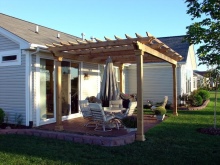
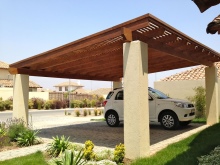
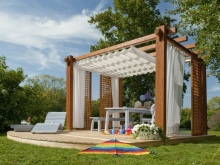
By type of canopy
The canopy determines the configuration of the pergolas. For example, tent option will provide excellent protection from sunlight, will arrange a parking lot or a small children's playground. You can make a pergola even with a sliding awning - the design is not simple, but interesting.
A canopy in the form of a visor will decorate the wall, will save windows from active sun, reduce heat load on a certain side of the building. It is very convenient if there is simply no escape from the active sun on one side of the house in the summer.
Alcove - such a structure resembles an ordinary gazebo both in shape and in size, but due to the lattice roof it will not protect against rain. And there is such a form as screen - she zones the site in the country, forms secluded corners on it. The option is popular and arched tunnel structure - the building will successfully close the path or path from the sun, form an aesthetic passage from the house to other buildings on the territory or other zones of the summer cottage landscape.
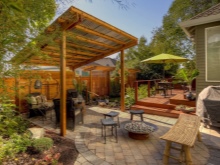
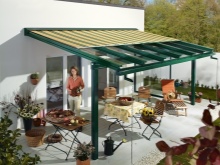
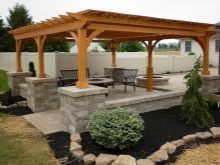
By form
Everything is simple here: the pergola can be angular, semicircular, round, made in the form of a triangle. It all depends on the place of construction, the list of functions and the possibilities that the site itself provides. A suspended structure, for example, is often angular. If this is a building with a sliding awning, there is an automatic system (possibly with an electric drive), which complicates the construction and requires certain conditions. It is often a wall building, angular or triangular.
Pergolas are diverse. It can be humble freestanding rectangular structures for vertical growth of climbing plants, with a small bench or bench inside. It can be mini arch-type constructionsbuilt on the balcony. It can be big lamellar buildings, decorated with curly well-groomed greenery grown according to all criteria of bioclimatic requirements. And even their design often fundamentally changes the look of the pergola: for example, a building with white lamellas entwined with greenery will look more solid than a building made of metal profiles.
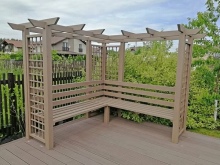


Materials (edit)
For the manufacture of this structure, a variety of materials are used, but wood is traditionally considered the most popular. The main advantages of wood are its relatively low weight and ease of processing. Wood is one of the most affordable building materials. In the garden, such buildings look as organic as possible. Racks can be decorated with carvings, beautifully toned.
The best species for this design are oak, larch, pine.
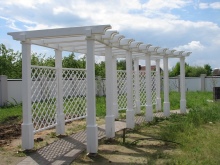

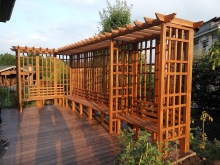
Metal
Construction of aluminum profiles is a common solution from the category of "economy". But forged buildings will look especially sophisticated in this category. They are not much inferior to pergolas made of laminated veneer lumber. Forged structures have been in operation for a very long time, and to extend their service, you just need to remember to cover the metal with anti-corrosion compounds. You can paint such a pergola in any color. Most preferred are black, white, green. But the chrome-plated variants, as well as the "bronze" ones, are also very attractive.
The main thing is that they are related to the style of the site.
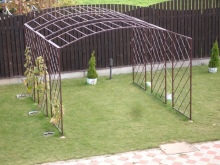
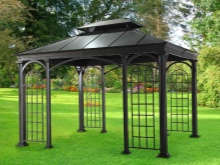
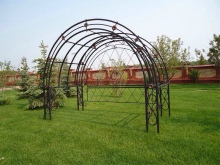
Brick and stone
In appearance, these buildings are very impressive and reliable; such buildings are made for decades. Structurally and in terms of labor costs, these ideas require both more funds and more effort. They are usually installed in areas that do not constrain such a scale. And logically, there should be at least one building on the territory, made of the same stone or brick.
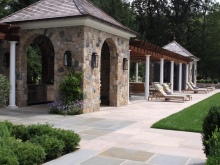
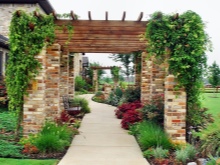
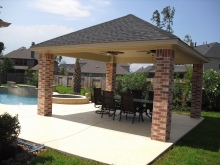
Plastic
Pergolas are also built from plastic pipes. And although this material is in many ways inferior to more environmentally friendly, it is cheap and, according to a number of characteristics, is convenient in the country.
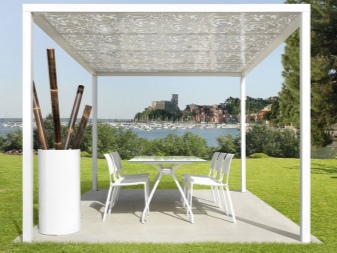
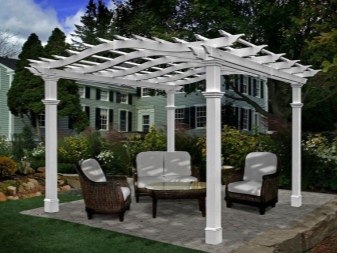
Combined buildings
These are, for example, wooden buildings with a polycarbonate roof or a roof in the form of an awning made of fabric.Wood and stone, metal and glass canopy, etc. are also combined.
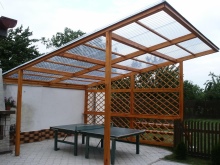
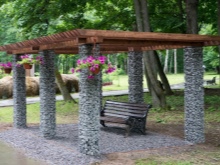
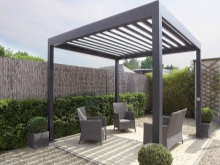
Or you can even not build the pergola yourself, but buy a ready-made structure from WPC. This is a popular solution to the issue of pergolas and gazebos in the country. Although, of course, self-construction is more interesting and caters to the peculiarities of an individual request. But, in addition to the choice of material, the choice of the design of the future structure will also be decisive. And here, too, interesting options open up.
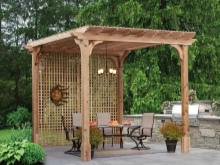
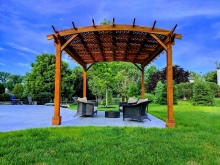
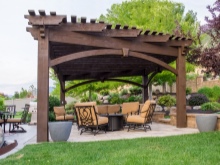
Style directions
Despite the variety of styles and modern possibilities of their visualization, the good old country... It is the most functional and probably the most natural. It is characterized by the correct geometry of forms, minimal finishing, pleasant brutality. The style does not become obsolete, it looks profitable, even if global changes take place in the country. But there is one caveat: the country pergola should not be too miniature.
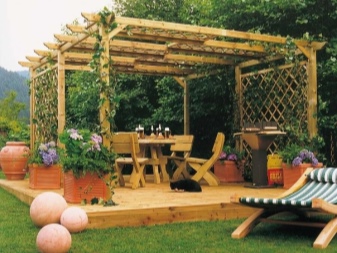

Oriental
Typically, the roof of this structure has a pyramidal shape, the sides (walls) are concave, and the color of the building is red or brown. Of course, you have to look to see if the surroundings correspond to the theme of the building, what kind of plants are around. The oriental style assumes many varieties, one of the most demanded today is the Japanese style.
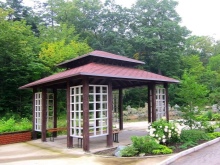
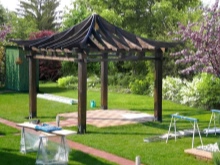
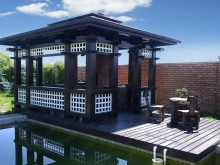
High tech
It is quite rare on the site, but it quite deserves to be. There must be something cosmic in the silhouettes of such a design, this is an original pergola with high functionality. Wood, as the main material, is hardly suitable here, but metal is actively used. A polycarbonate roof is quite possible.
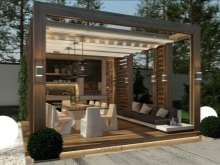
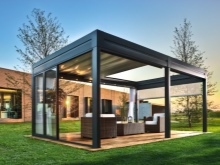
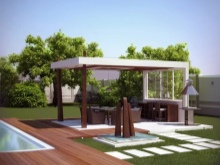
Modern
This is a very demanding direction that must have an appropriate environment. Refinement, gracefulness, clear structuredness - this is what should be on a site that is friendly with this style. The pergola has clear lines, contrasting combinations are the main recognizable features.
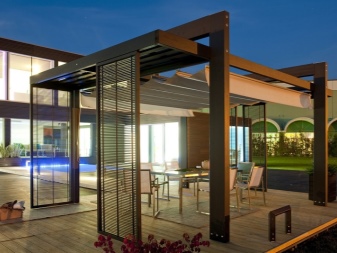
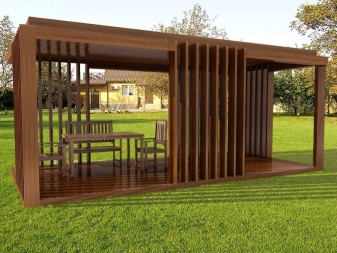
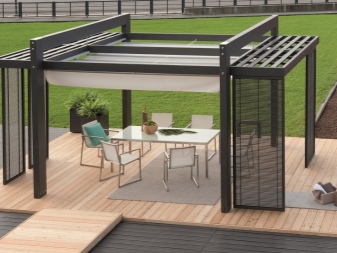
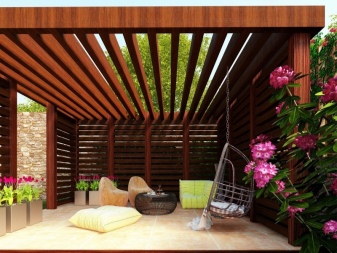
Chalet
Usually this is a building, inside which there is a barbecue area, barbecue or oven. It must be reliable, large enough, and its roof must be well protected from rain (the option of a sliding awning is possible).
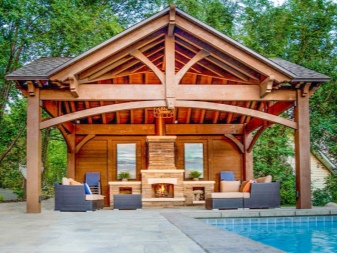
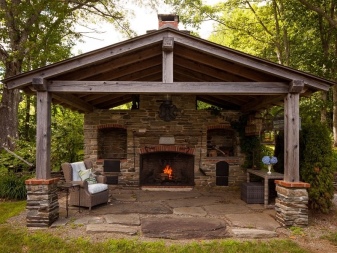
Fachwerk
This style is definitely worth looking at for everyone who likes to be original. In this style, you can make a very practical pergola from high quality materials.
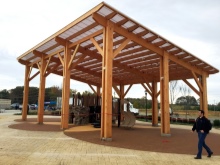
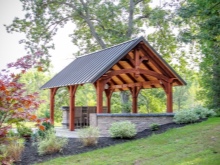
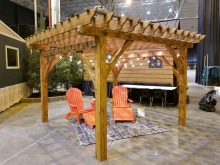
Provence
This is one of the varieties of country style with gentle and pastel colors, warmth of design and general mood of the beauties of the south of France.
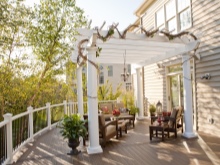
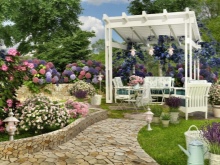
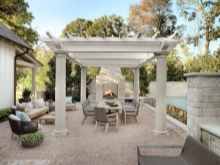
Scandi
This is most likely a white wooden building of a simple and regular shape, which in the evenings will be decorated with a garland of lights. The base can be equipped with a platform so that the pergola becomes a small summer amphitheater in a garden / summer cottage version. Simplicity, as is often the case, may be the best solution.
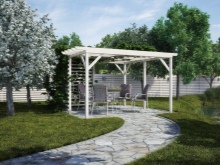

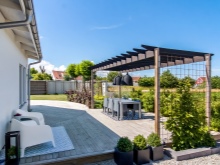
And in order for the elegance and beauty of the design to be correctly emphasized, you need to choose the plants for the pergola correctly.
Which plants are suitable?
Traditionally, a pergola is a structure for climbing plants. More often for grapes. But there are other attractive options as well.

Actinidia
It can even withstand severe frosts. Actinidia is vulnerable, perhaps, only in late spring, but this just needs to be taken into account in advance. She will not require much attention. AND if you want something like grapes, but still not it, you can't find actinidia better.

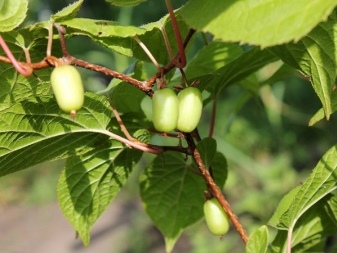
Honeysuckle honeysuckle
This is an unpretentious climbing plant that grows very quickly (which is what is needed for the speedy design of the pergola). It looks pretty and The aroma from the inedible species of honeysuckle comes out very attractive.
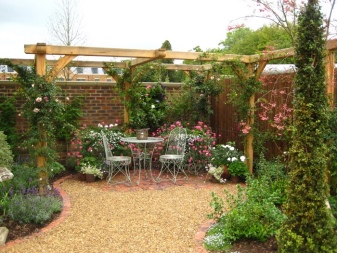
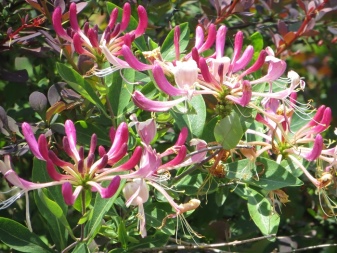
Wisteria "Blue Moon"
This is a rare plant species that is not afraid of low temperatures. If you want the pergola to be in a beautiful bluish-blue flower cloud, you need to take a closer look at the wisteria. True, the plant will not survive at all without care, but it cannot be called very capricious either.

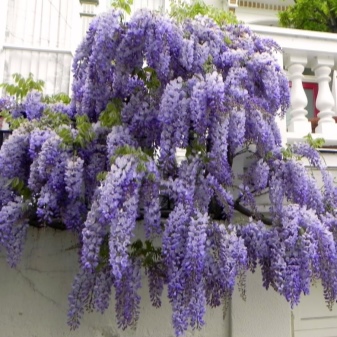
Curly ivy
The plant can grow up to 30 m in length. They can plant trees on a pergola both vertically and horizontally. But it is worth remembering the toxicity of ivy berries, so if there are small children in the house, it is better to try growing something else.
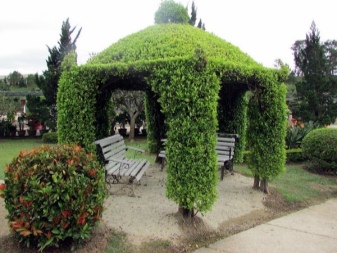
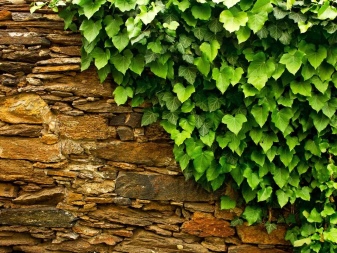
Clematis
The plant is thermophilic, it will not take root in every region. His flowers are large, very beautiful, the most loyal species can be called clematis with purple flowers.
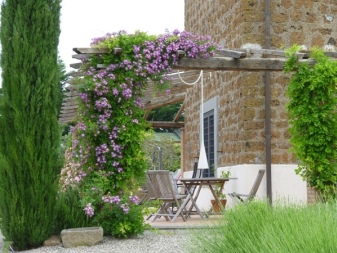

Schizandra or lemongrass
An expressive lemon scent really emanates from it, hence such a “popular” name. The curly shoots of the plant grow very well, so the pergola is planted rather quickly.
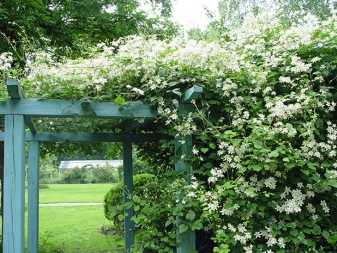

Ornamental beans
As you might guess, they don’t eat it, but otherwise it’s a miracle how good it is. This is an undemanding annual, not a trivial solution for a site at all.
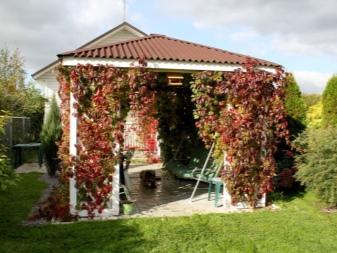
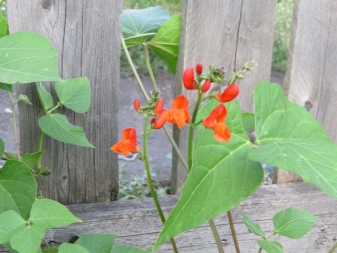
Baljuan Highlander
Every year, this powerful liana grows by 5 m. It blooms profusely with a scattering of delicate flowers. But the vine will bloom actively only in a sunny area. Therefore, for example, if the pergola is adjacent to the house, is at least partially in the shade, this place will not work.
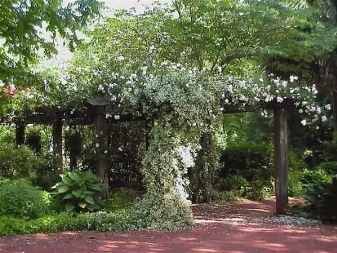
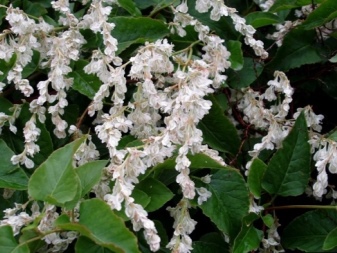
Unexpected solutions for using a pergola are also possible: even cucumbers grow there (especially if the building is not high), raspberries look very beautiful on the pergola.
Beautiful examples
The designs presented in this collection inspire you to quickly start building your own beautiful and functional building on the site.
12 examples for a summer resident.
- It looks more like a gazebo and has not yet overgrown with greenery, but it already looks as attractive as possible in a sunny place. The structure is large, and therefore it is possible to organize there not only a summer dining room, but also a place for daytime sleep.
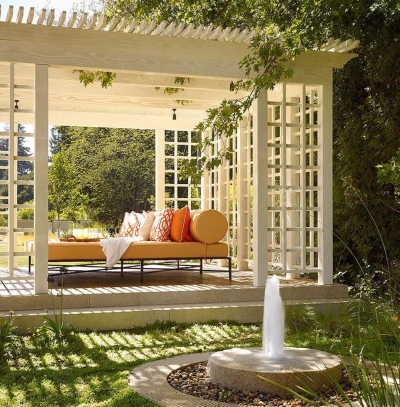
- The pergola is attached to the house, it is also used for the time being more as a gazebo, but options are possible. Instead of wrought iron furniture and other options for garden furniture, you can also use wooden ones.
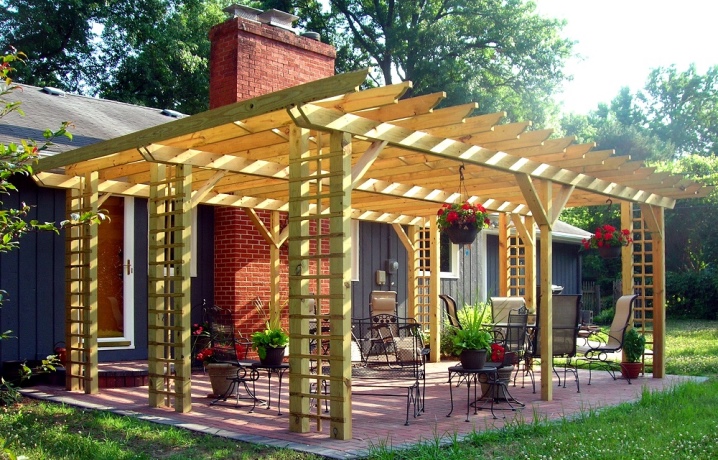
- Small pergola bench in chalet style. A very cozy and uncomplicated solution. It is convenient here both for a person who will settle down with a book on pillows, and for plants, the verticalization of which is helped by the design feature.
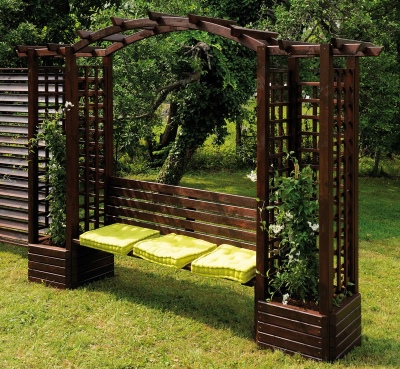
- White large pergola on beautiful columns in antique style. The summer dining room is conveniently located here. The lattice wall will quickly overgrow with greenery.
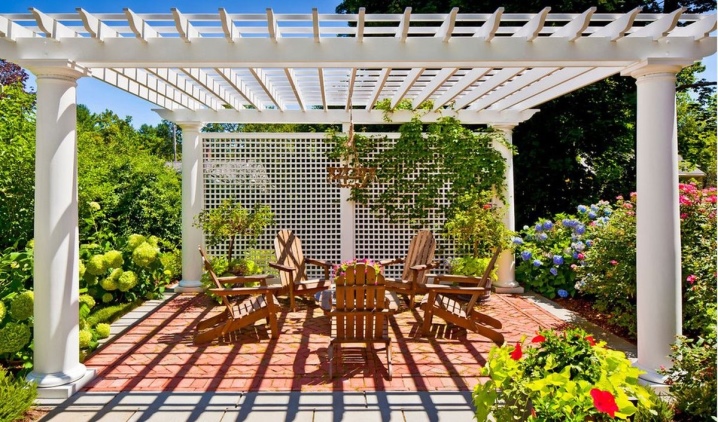
- And this is how a fairly overgrown structure looks like. Moreover, there are no clear walls, the pergola stands on pillars. But the massive top balances the composition.
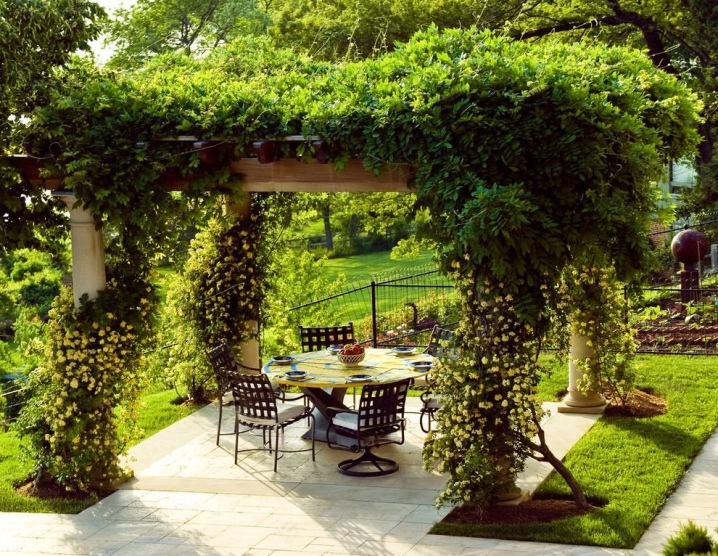
- Pergola in oriental style - of course, it is not easy to build this with your own hands, but it looks unusually stylish. The construction is worthy of the central part of the site.

- Pergola next to the house. This arrangement is convenient if it is decided to place a summer dining room here. Carrying dishes and food does not have to be far away.
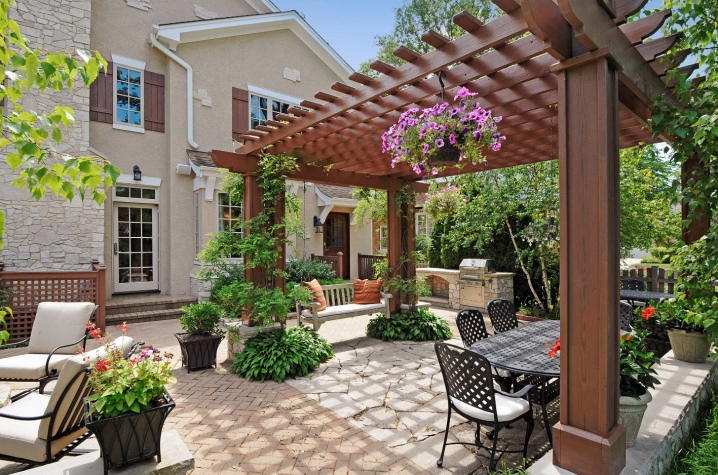
- Columns and wood are obviously a very beautiful and convenient combination that always looks advantageous in the rays of the generous summer sun. And in the evenings romantic lamps are lit here and you can spend time at this table with good company until dawn.
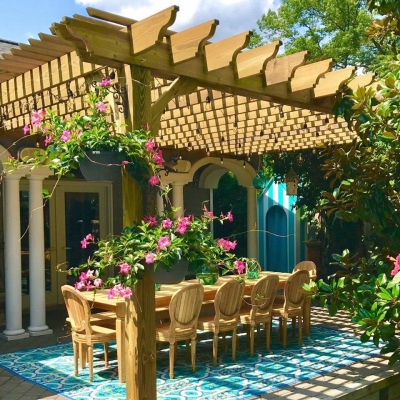
- Not the most common design with a convex roof. Vegetation activity can be monitored. Looks good as an entrance to a particular area of the site.
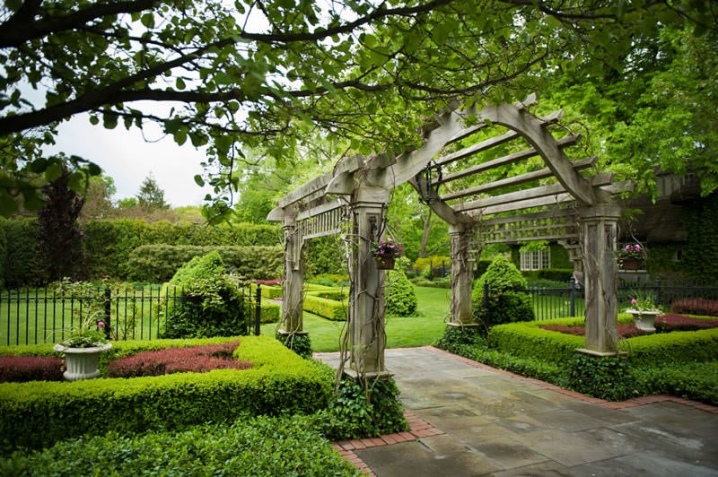
- The pergola with stone supports is part of the walking path in the garden. She is literally buried in greenery (landscape background), maybe a zoner.
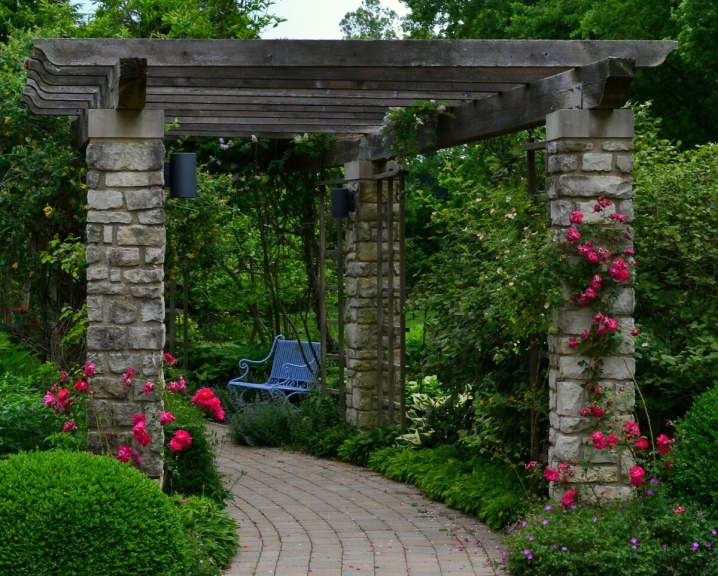
- This is what a garden swing might look like - sheer tenderness, but also multifunctional. Sometimes, instead of a swing, a hammock is attached to the pergola.
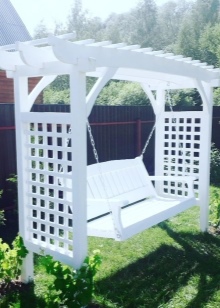
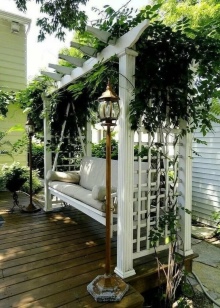
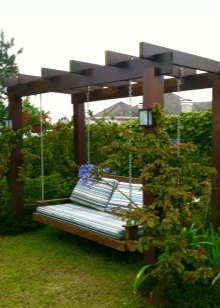
- This pergola looks more like a gazebo, it has a solid roof that reliably protects from precipitation. But the lattice walls leave the opportunity to grow climbing crops here.

You can learn how to make a pergola out of wood with your own hands from the video below.


































































The comment was sent successfully.